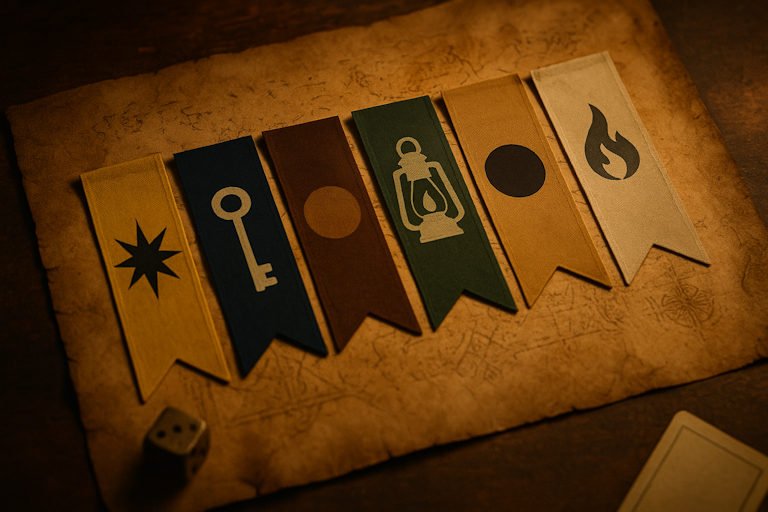
Lies and deception in storytelling: how playful trickery deepens the narrative (2025)
Stories have always thrived on tension between truth and illusion. At their core, lies and deception in storytelling are tools that keep audiences leaning forward, wondering what is real and what is not. A single hidden fact, a misleading clue, or a character who conceals their intent can shift an entire narrative, turning a simple tale into something layered and unforgettable.
Why do deception and misdirection draw us in so deeply? Because they mirror life itself. We all navigate between appearances and realities, between what is said and what is meant. When a story plays with these tensions, it sparks curiosity and emotional investment. The audience becomes active, piecing together fragments, second-guessing motives, and feeling the thrill of discovery when truth finally emerges.
This article explores how lies and deception in storytelling function not as cheap tricks but as meaningful devices. We’ll look at why deceit intrigues us, which techniques make it effective, and where the line lies between clever misdirection and frustrating betrayal. Along the way, we’ll uncover how playful trickery can deepen narratives, making stories resonate long after they end.
lies and deception in storytelling: why lies intrigue us
At first glance, it may seem strange that we enjoy being deceived. Yet one of the strongest forces in narrative is the careful use of lies and deception in storytelling. From ancient myths to modern novels, deception has been used to create tension, shape character, and deliver unforgettable twists. We lean into lies not because we want to be tricked, but because deception adds layers that make stories richer.
One reason deceit fascinates us is its link to suspense. A well-placed lie delays truth, stretching the anticipation until its revelation. Whether it’s a character hiding their true identity or a narrator who withholds information, deception builds curiosity. The audience becomes restless to uncover what is hidden, and that restlessness fuels engagement.
Deception also plays a key role in character development. When a hero lies, we glimpse their flaws and humanity. When a villain deceives, we witness the cunning that makes them dangerous. In both cases, lies expose truths: about motives, fears, and the cost of choices. Characters without deceit can feel flat; those who deceive feel alive, layered, and unpredictable.
Another source of intrigue lies in mirroring reality. Everyone has experienced situations where appearances didn’t match reality. Stories that echo this tension feel familiar, resonating with our lived experience. Lies and deception allow storytelling to reflect not just what we hope for, but what we wrestle with — uncertainty, doubt, and revelation.
Ultimately, the power of lies and deception in storytelling lies in how they make audiences active participants. When truth is uncertain, readers and players speculate, interpret, and engage more deeply. It is in this dance between truth and illusion that stories achieve their most lasting impact.

Uncover
The Firefly Inn
Behind its lantern light, secrets wait to be revealed. Step closer, and choose your path into the unknown.
Techniques of misdirection and narrative structure
The craft of lies and deception in storytelling is not only about what is said, but also about what is hidden, delayed, or twisted. Storytellers have long developed techniques that make deception feel playful rather than manipulative, ensuring that the audience enjoys the ride even as truth is concealed.
One classic method is the unreliable narrator. When the voice guiding the story bends facts or omits key details, the audience is forced to question every word. From diaries to first-person accounts, this technique invites readers to search for what lies beneath, sharpening their attention and heightening the eventual reveal.
Another technique is strategic timing. Deception works best when truths are revealed at carefully chosen moments. A withheld clue, a false lead, or a misinterpreted symbol can stretch suspense until the perfect instant of revelation. The delayed disclosure transforms an ordinary scene into a dramatic turning point.
Symbolism and metaphor also play subtle roles in misdirection. A mask, a shadow, or a mirror can signal hidden truths without spelling them out. These devices invite interpretation, allowing the audience to sense layers of meaning before they fully grasp them.
Finally, deception often thrives through framing and perspective. The same event shown from different angles can mislead without lying outright. By shifting focus, storytellers can guide attention away from what matters most, only to return to it later with striking effect.
These techniques ensure that lies and deception in storytelling don’t feel like betrayal, but like an invitation to play. They create space for surprise, tension, and interpretation, allowing narratives to feel alive and unpredictable. When crafted with care, misdirection becomes not a trick against the audience, but a game shared with them — one that deepens immersion and delight.

Uncover
The Firefly Inn
Behind its lantern light, secrets wait to be revealed. Step closer, and choose your path into the unknown.
Quick insights about playing with deception well
Deception is most effective when it feels like part of the game between storyteller and audience. These insights show how to use lies and deception in storytelling with care and impact:
- Plant subtle hints. A well-placed clue prevents deception from feeling unfair. The audience should be able to look back and see the truth hidden in plain sight.
- Keep it playful. Deception should spark curiosity and delight, not frustration. Balance misdirection with moments of clarity.
- Respect the audience. The goal is surprise, not betrayal. If lies collapse into confusion, trust is lost.
- Use atmosphere. Shadows, mirrors, or recurring symbols can mislead gently, shaping perception without heavy exposition.
- Time the reveal. Hold back just long enough to build suspense, but release before tension turns into fatigue.
- Stay true to tone. Deception must fit the world and characters. A lie out of place breaks immersion more than it builds intrigue.

Handled this way, lies and deception in storytelling become more than tricks. They turn narratives into living puzzles — playful, layered, and memorable.
Risks & ethics of lies in narrative
While lies and deception in storytelling can enrich a narrative, they also carry risks. Deception works only when it feels fair — when the audience can look back and trace the path that led to the reveal. If a lie is too heavy-handed or the truth is withheld without reason, readers may feel betrayed rather than delighted. Trust, once broken, is hard to restore.
One major risk lies in frustration. If every clue turns false or if misdirection lasts too long, tension collapses into fatigue. The balance between mystery and clarity is delicate: deception should heighten curiosity, not exhaust it. When audiences feel tricked for the sake of trickery, immersion breaks.
There are also ethical considerations. Storytelling is a shared pact: the creator promises an experience that challenges but also respects the audience. If lies distort themes, misrepresent sensitive issues, or manipulate emotions unfairly, the story can lose integrity. Ethical deception offers surprise, but never at the cost of dignity or trust.
Another challenge is tone and context. In playful narratives, light misdirection can be delightful. In heavier or more realistic stories, the same technique may feel dishonest. Lies must serve the story’s purpose and remain true to its world. Missteps here risk alienating readers, leaving them disengaged rather than intrigued.
Ultimately, the ethics of lies and deception in storytelling revolve around intention. Deception is most powerful when it illuminates deeper truths — about characters, about choice, about the human condition. Used carelessly, it weakens the story; used wisely, it strengthens its heart. The storyteller’s task is not simply to trick, but to guide the audience through shadow toward revelation.
Conclusion – Lies and deception: the fine line between surprise and betrayal
Stories endure because they surprise us, unsettle us, and make us question what we know. Lies and deception in storytelling play a central role in that process, not as cheap tricks but as deliberate tools that give depth and tension to a narrative. They hold the audience in suspense, spark curiosity, and create the unforgettable moments where illusion meets revelation.
When used with balance, lies and deception in storytelling turn a simple tale into a layered puzzle. They shape character growth, invite the audience to participate, and weave meaning into every hidden clue. Deception in this sense is not about breaking trust but about strengthening the bond between storyteller and listener — a shared journey through shadow to find the light.
The challenge lies in ethics and restraint. Push too far, and deception becomes betrayal; use it wisely, and it becomes the heartbeat of narrative play. Every mask, every misleading symbol, every withheld truth reminds us that stories mirror the complexity of life itself.
In the end, lies and deception in storytelling are not the enemy of truth. They are its shadow, shaping how truth emerges and how deeply it resonates. To master deception is to master tension — and to create stories that live on long after the last page is turned.

Uncover
The Firefly Inn
Behind its lantern light, secrets wait to be revealed. Step closer, and choose your path into the unknown.




